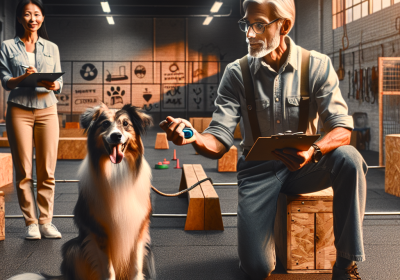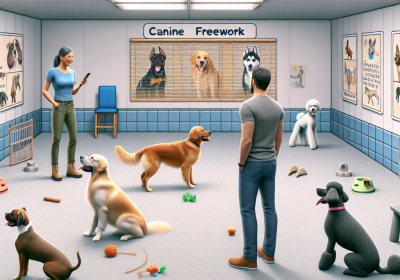Different Types of Canine Freework
Table of Contents
Canine freework is a versatile and enriching activity that allows dogs to engage in natural behaviors, promoting physical and mental well-being. This practice encompasses various types, each designed to stimulate different aspects of a dog’s instincts and abilities. Scent work, for instance, taps into a dog’s powerful sense of smell, encouraging them to locate hidden scents or objects. Agility training involves navigating obstacle courses, enhancing a dog’s coordination, speed, and confidence. Trick training focuses on teaching dogs a variety of entertaining and useful behaviors, fostering mental stimulation and strengthening the bond between dog and handler. Enrichment activities, such as puzzle toys and interactive games, provide mental challenges that keep dogs engaged and prevent boredom. Each type of canine freework offers unique benefits, contributing to a well-rounded and happy canine companion.
Benefits Of Scent-Based Canine Freework
Scent-based canine freework, a practice that leverages a dog’s natural olfactory abilities, offers numerous benefits for both the animal and its handler. This type of activity involves allowing dogs to explore and interact with their environment through their sense of smell, which is their most powerful and primary sense. By engaging in scent-based freework, dogs can experience a range of physical, mental, and emotional benefits that contribute to their overall well-being.
One of the primary advantages of scent-based canine freework is the mental stimulation it provides. Dogs have an extraordinary sense of smell, with up to 300 million olfactory receptors compared to a human’s mere 6 million. This heightened sense allows them to detect and differentiate between a vast array of scents. When dogs engage in scent-based activities, they are required to use their cognitive abilities to identify, track, and analyze different smells. This mental exercise can help to keep their minds sharp and prevent cognitive decline, particularly in older dogs.
In addition to mental stimulation, scent-based freework also offers significant physical benefits. As dogs follow scent trails, they often engage in a variety of movements, such as walking, running, and climbing. This physical activity helps to maintain their overall fitness and can contribute to weight management. Moreover, the varied terrain and environments in which scent-based freework takes place can help to improve a dog’s agility and coordination. This type of exercise is particularly beneficial for working breeds, which have high energy levels and require regular physical activity to stay healthy and happy.
Furthermore, scent-based canine freework can have a positive impact on a dog’s emotional well-being. Engaging in activities that tap into their natural instincts can provide a sense of purpose and fulfillment. This can be especially important for dogs that may be experiencing stress or anxiety. By allowing them to focus on a specific task, such as tracking a scent, they can redirect their energy and attention away from sources of stress. Additionally, the sense of accomplishment that comes from successfully completing a scent-based task can boost a dog’s confidence and overall mood.
Another notable benefit of scent-based freework is the strengthening of the bond between the dog and its handler. Participating in these activities together fosters a sense of teamwork and mutual trust. Handlers learn to read their dog’s body language and cues, while dogs learn to rely on their handler’s guidance and support. This enhanced communication and understanding can lead to a more harmonious relationship and improved cooperation in other areas of training and daily life.
Moreover, scent-based freework can be an inclusive activity that accommodates dogs of all ages, sizes, and abilities. Unlike some high-impact physical activities, scent-based tasks can be adapted to suit the individual needs and limitations of each dog. For example, older dogs or those with mobility issues can still participate in scent-based games that require less physical exertion but still provide mental stimulation and enrichment.
In conclusion, scent-based canine freework offers a multitude of benefits that contribute to a dog’s overall well-being. By providing mental stimulation, physical exercise, emotional fulfillment, and opportunities for bonding, this type of activity can enhance the quality of life for dogs and their handlers alike. As such, incorporating scent-based freework into a dog’s routine can be a valuable and rewarding practice for both parties.
Incorporating Agility In Canine Freework
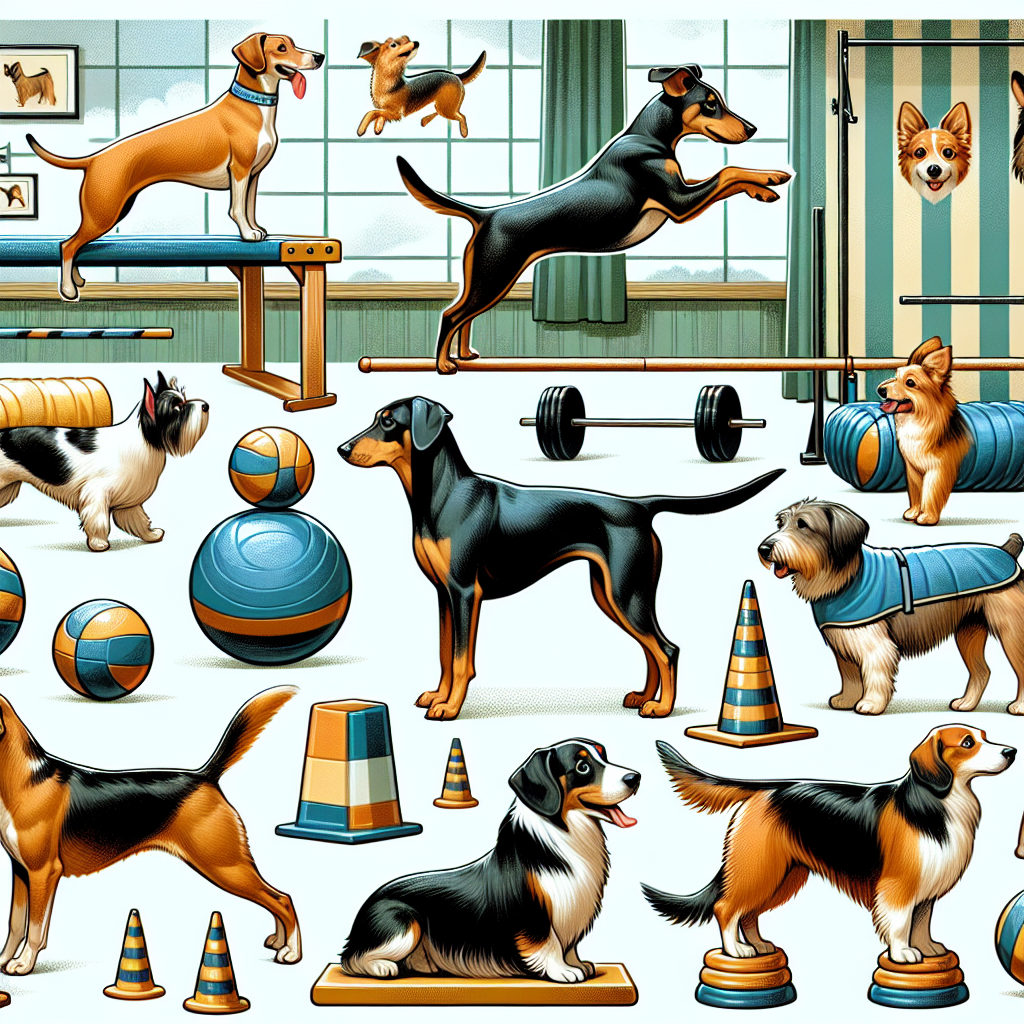
Incorporating agility into canine freework can significantly enhance a dog’s physical and mental well-being. Agility training, which involves navigating a series of obstacles such as jumps, tunnels, and weave poles, can be seamlessly integrated into freework sessions to create a more dynamic and engaging experience for both the dog and the handler. This combination not only provides a comprehensive workout but also fosters a deeper bond between the dog and its owner.
To begin with, agility training in canine freework can improve a dog’s physical fitness. The various obstacles require the dog to use different muscle groups, promoting overall strength and endurance. For instance, jumping over hurdles strengthens the hind legs, while weaving through poles enhances flexibility and coordination. Additionally, the rapid changes in direction and speed help to improve cardiovascular health. By incorporating these elements into freework, dogs can enjoy a more varied and stimulating exercise routine, which can be particularly beneficial for high-energy breeds that require more intense physical activity.
Moreover, agility training can also have a positive impact on a dog’s mental health. The problem-solving aspect of navigating an agility course requires the dog to think critically and make quick decisions. This mental stimulation can help to reduce boredom and prevent behavioral issues that may arise from a lack of mental engagement. Furthermore, the structured nature of agility training can provide a sense of accomplishment and boost a dog’s confidence. When integrated into freework, these cognitive benefits can contribute to a more well-rounded and mentally resilient canine.
Transitioning from physical and mental benefits, it is also important to consider the role of agility training in strengthening the bond between a dog and its handler. Agility courses require clear communication and teamwork, as the handler must guide the dog through the obstacles using verbal cues and body language. This collaborative effort can enhance the trust and understanding between the two, leading to a more harmonious relationship. When agility is incorporated into freework, it allows for a more interactive and cooperative experience, further solidifying the bond between the dog and its owner.
In addition to these benefits, agility training can also be adapted to suit dogs of all ages and abilities. For younger dogs, low-impact obstacles such as tunnels and weave poles can be introduced to build foundational skills without putting undue stress on developing joints. For older dogs or those with physical limitations, modifications can be made to reduce the height of jumps or the complexity of the course. This adaptability ensures that all dogs can participate in and benefit from agility training, making it a versatile addition to any freework routine.
Furthermore, incorporating agility into canine freework can also provide opportunities for socialization. Group agility classes or freework sessions can expose dogs to new environments, other dogs, and different handlers. This exposure can help to improve social skills and reduce anxiety in unfamiliar situations. The social aspect of agility training can also be enjoyable for owners, as it allows them to connect with other dog enthusiasts and share experiences and tips.
In conclusion, integrating agility training into canine freework offers a multitude of benefits, including improved physical fitness, enhanced mental stimulation, strengthened bonds between dogs and their handlers, and opportunities for socialization. By incorporating agility elements into freework sessions, owners can create a more engaging and comprehensive exercise routine that caters to the holistic well-being of their dogs. This approach not only enriches the dog’s life but also fosters a deeper and more fulfilling relationship between the dog and its owner.
Mental Stimulation Through Puzzle-Based Canine Freework
Mental stimulation is a crucial aspect of canine well-being, and puzzle-based freework offers an excellent avenue for engaging a dog’s mind. This type of freework involves activities that challenge a dog’s cognitive abilities, providing both entertainment and mental exercise. By incorporating puzzle-based tasks into a dog’s routine, owners can help prevent boredom, reduce anxiety, and promote overall mental health.
One of the most popular forms of puzzle-based canine freework is the use of interactive toys. These toys are designed to stimulate a dog’s problem-solving skills by requiring them to manipulate the toy in specific ways to access a reward, usually a treat. For instance, treat-dispensing balls and puzzle feeders are excellent tools that encourage dogs to think critically and use their paws or noses to retrieve the hidden treats. This not only keeps them occupied but also provides a sense of accomplishment once they succeed.
In addition to interactive toys, scent-based puzzles are another effective method for mental stimulation. Dogs have an extraordinary sense of smell, and utilizing this natural ability can be highly beneficial. Scent-based puzzles often involve hiding treats in various compartments or under layers of fabric, prompting the dog to use their olfactory senses to locate the reward. This type of activity not only engages their mind but also taps into their instinctual behaviors, making it a highly satisfying experience for the dog.
Moreover, puzzle-based freework can be tailored to suit the individual needs and abilities of each dog. For example, beginners might start with simpler puzzles that require basic problem-solving skills, while more advanced dogs can be challenged with complex tasks that demand higher levels of cognitive function. This customization ensures that the dog remains engaged and motivated, preventing frustration and maintaining a positive experience.
Transitioning from toys and scent-based puzzles, another form of puzzle-based freework involves training exercises that incorporate problem-solving elements. Teaching a dog new tricks or commands can be mentally stimulating, especially when the training sessions are designed to be challenging and rewarding. For instance, teaching a dog to navigate an obstacle course or solve a series of tasks in a specific order can provide substantial mental exercise. These activities not only enhance the dog’s cognitive abilities but also strengthen the bond between the dog and the owner through positive reinforcement and shared experiences.
Furthermore, puzzle-based freework can be integrated into daily routines, making it a convenient and practical option for busy pet owners. Simple activities such as hiding treats around the house or using puzzle feeders during mealtime can transform ordinary moments into opportunities for mental stimulation. This approach ensures that the dog receives regular cognitive exercise without requiring significant additional time or effort from the owner.
In conclusion, puzzle-based canine freework is an invaluable tool for promoting mental stimulation and overall well-being in dogs. By incorporating interactive toys, scent-based puzzles, and training exercises into a dog’s routine, owners can provide enriching experiences that challenge their pets’ minds and prevent boredom. Tailoring these activities to suit individual needs and integrating them into daily routines further enhances their effectiveness. Ultimately, puzzle-based freework not only benefits the dog’s mental health but also fosters a deeper connection between the dog and the owner, contributing to a happier and more fulfilling life for both.
Read more about Canine Freework
What is Canine Freework?
– The Definition of Canine Freework
– Benefits of Canine Freework for Dogs
– History of Canine Freework
– Different Types of Canine Freework
– How to Get Started with Canine Freework


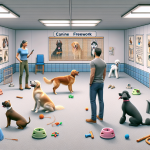


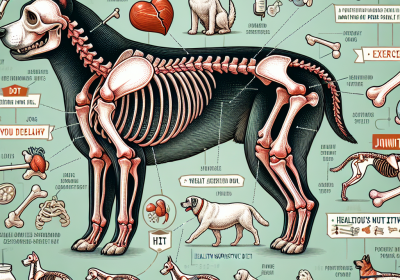
![The Dog Podcast Uncovers Startling Truths About What We Feed Our Dogs [Press Release]](https://insightfulwords.com.au/wp-content/uploads/2024/08/nutritious-dog-food-400x280.jpg)
